Transportation Business Resources

Protecting your cargo and your transportation business is our business. Travelers is dedicated to helping freight brokers, fleet operators and logistics firms reduce preventable losses and costs through our products, vendor alliances and claim processing. We use our transportation experience and science to assist companies with security best practices, proper securement techniques for loading and handling, theft prevention and road safety issues.
Travelers on Freightwaves Podcast
Freightwaves is the leading provider of trucking news, media and analytics for truckers, intermodal and logistic operators. Travelers has recently contributed to the Freightwaves “What the Truck” Podcast series to share insights on topics ranging from choosing the right insurance carrier to commonly overlooked coverages to trends in cargo theft. Give each a listen.
Podcast #40: Important Contract Considerations for Freight Brokers
Join Craig Leinauer, Inland Marine Corporate Claim Manager, on this episode of What the Truck?!?, as he shares important contract considerations for freight brokers.
Aired: 1/17/2024
Paid Content
(DESCRIPTION)
This content is brought to you by Travelers. The speaker is seated at a desk with a sign behind him that reads, What the Truck?!? On his desk are various toys, including Biggie and Tupac figurines and a semi-truck with the Transformers logo. The speaker holds a microphone and speaks to us.
(SPEECH)
SPEAKER 1: We got my buddy from Travelers. I hope he's staying warm. Craig, where are you in the world? It's 23 degrees here in Chattanooga. But it was 7 degrees in the morning.
(DESCRIPTION)
The screen splits to also show Craig, who sits in his living room in front of a wall of framed family photos and speaks to us.
(SPEECH)
SPEAKER 2: I am right outside of Chicago, Illinois, in Naperville, where it's a balmy 16. But
(DESCRIPTION)
The first speaker shakes his head.
(SPEECH)
that's looking up because the past few days, it hasn't been above zero. So it's pretty chilly.
SPEAKER 1: You don't have an EV, do you? There was an article in USA Today or something yesterday that was like, all the Tesla’s in Chicago have frozen, and it's causing huge issues.
SPEAKER 2: Yeah. No, I do not have an EV. But I have some folks that work with me that do. And it's not a good place to be right now, if you have an EV with a lithium-ion battery. It's pretty challenging.
SPEAKER 1: No. No, you might need, you might need a contingent. Maybe you need an ice vehicle backup. Maybe you need a second car. But
(DESCRIPTION)
Craig smiles and nods.
(SPEECH)
if you're a broker, maybe you need contingent coverage. That's something we talked about last time you were on. Anything new here?
(DESCRIPTION)
Text, Craig Leinauer, Inland Marine Corporate Claim, Travelers.
(SPEECH)
SPEAKER 2: Yeah. No, we talked about contingent coverage and how it's a good backstop for a freight broker to have so that they're shipping customer can be made whole, if the trucking company who should pay for the cargo damage fails to do so. It's relatively inexpensive. So there's really little reason not to have it.
SPEAKER 1: And today, we have a sidebar topic to contrast contingent coverage, what we got to do. Set the table for us, sir.
SPEAKER 2: Yeah, so today's topic addresses important things that freight brokers should consider before they sign a contract. And contingent coverage happens to be one of them.
SPEAKER 1: Interesting. I mean, the freight brokers though, they shouldn't-- freight brokers have to sign contracts, right? But how do they know which ones to sign?
SPEAKER 2: Well, it's not news. Contracts will change the balance of who's responsible for what. So you need to understand how a contract changes your liability before you sign it. And there are a few things that you should consider.
SPEAKER 1: OK, great. Spell it out for us. What do we need to consider?
SPEAKER 2: Yeah. So the first thing to consider, first thing to remember is that there are two different kinds of coverage for freight brokers. The first is liability coverage, which covers your legal liability as a freight broker for cargo damage. And then the second is contingent coverage, which of course, protects against cargo loss or damage when you aren't liable, but the liable trucking company fails to pay.
And then after you remember the different kinds of coverages, you need to think about the policy in front of you. And you need to ask yourself what's covered and what's not. Some policies don't cover certain commodities. So for example, commodities like precious metals, or seafood, pharmaceuticals, these kinds of things aren't covered. So you really need to know what the commodity is that's being transported, since these commodities may require a special insurance.
And then also looking at the policy, you need to ask yourself, what causes of loss are covered and what aren't covered? So things like, causes of loss like dishonest acts by the driver, or theft from an unattended vehicle, or even improper setting of refrigeration thermostats. These are causes of loss that not all policies cover.
And then lastly, when looking at the coverage, you need to ask yourself, does the policy only cover damage that involves a specifically listed vehicle or a specifically listed driver? You need to read your policies carefully. Check the certificate of insurance also for the trucking company's policy, which may have a clue as to this kind of information.
SPEAKER 1: Sounds like a lot of responsibility. There are a lot of variables to take into consideration before you sign on the dotted line.
SPEAKER 2: Looking at the coverages and the insurance policies, you need to take a look at the contract and specifically consider liability assumption. Because generally, as we've spoken about before here, a broker isn't liable for cargo loss or damage. Because they don't actually handle the goods, they don't touch the cargo. But some contract terms might make the brokers fully liable for that damage, as if they were the trucking company. And that's close to a strict liability.
And another thing that's important to pay attention to in contracts, after you read carefully for liability assumption, is the distinction between minimum limits of insurance with a limitation of liability. So those are two different things. And a loss might be greater than the limit of insurance that's spelled out in the contract. And this will expose the freight broker to an unfortunate and uninsured loss.
So for example, let's say we have a $200,000 cargo loss, and we only have $100,000 worth of insurance coverage that's required by the contract. And the broker, in that case, is then exposed to the $100,000 of uninsured loss, meaning the $100,000 beyond the limit of insurance in the contract.
On the other hand, when the contract stipulates a limitation of liability of $100,000, then the broker shouldn't be responsible or liable beyond that $100,000. So it's really critical to remember when you look at a contract and understand that a contract limitation of liability is not a contract limit of insurance. It's not a limit of insurance.
SPEAKER 1: Not that wasn't enough, but is there more that freight brokers have to consider when signing a contract?
SPEAKER 2: Yeah, as a matter of fact, there is. But we're in the home stretch here. So the last thing you need to think about and consider before signing a contract are whether or not there are any coverage gaps. And you need to understand that contingent coverage policies aren't created equally. Unfortunately, there's not standard wording for contingent coverage policy. So you have to read them carefully to understand the triggers and limitations.
For example, some policies won't provide coverage at all if a payment of any kind, in any amount is made by the trucker's insurance company. So a little awareness can go a long, long way.
SPEAKER 1: Yeah, better safe than sorry in this situation.
SPEAKER 2: Well, exactly. And look, all this contract stuff, it sounds intimidating, but it's really not. It's just paying attention to what's in front of you, being aware of what policies and contracts are in place, and then taking stock of any potential coverage gaps. You should just pause, pause a moment, ask yourself a few questions, double check a few things before you sign anything. And it's better to do this before the shipment happens, to attempt to identify an uninsured exposure, rather than trying to address this or address these uninsured exposures after the loss occurs.
SPEAKER 1: Duh, a lot to think about there. How do people go and get more information about this?
SPEAKER 2: Travelers.com is where you would go.
SPEAKER 1: Craig, stay warm, stay warm over in that windy city of Chicago. And maybe next year, it'll be a good one for your Bears. I don't think Belichick's going there.
SPEAKER 2: [LAUGHS] We'll see. Thanks so much for having me.
SPEAKER 1: It might be my neighbor in Atlanta, that's the rumors. We'll see. Take it easy, sir. Appreciate your time today. All right, elsewhere.
Podcast #39: Theft Trends and Technology
Join Scott Cornell, Transportation Lead and Crime and Theft Specialist for Travelers, as he provides an update on cargo theft trends and new technology that could potentially help.
Aired: 12/11/2023
Paid Content
(DESCRIPTION)
Text: What The Truck?!? Subscribe. Logos: YouTube, Indeed, Facebook, Apple Podcasts, Spotify, TikTok, X. -- To the left of a Christmas tree, host Timothy Dooner sits in front of a monitor. The host's desk holds a toy truck, action figures, and other trinkets. To the right of Timothy's video feed, a Today's Show menu displays "Scott Cornell" and "Freight Theft Trends" as upcoming items. At the bottom of the screen, headlines scroll continuously: Adobe Analytics reported a record 9.8 billion dollars in Black Friday online sales, up 7.5% from 2022, not accounting for inflation. And for Cyber Monday, the numbers were even stronger with consumers spending 12.4 billion dollars, a 9.6% increase from 2022. It is a positive sign for the health of the retail industry because most retailers make the bulk of their profits for the year during the holiday shopping season.
(SPEECH)
TIMOTHY DOONER: Anyways, we got Scott Cornell now-- transportation lead, crime and theft specialist over at Travelers. Scott, how are you doing, buddy?
(DESCRIPTION)
Scott's video feed appears to the right of Timothy's feed. Text: Scott Cornell, Transportation Lead and Crime and Theft Specialist, Travelers. Scott wears a red Travelers umbrella logo pin on his jacket lapel.
(SPEECH)
SCOTT CORNELL: Yeah, how are you? Haven't talked to you in a while. How you been?
TIMOTHY DOONER: It's been a minute. It's been a minute. I haven't seen anyone in trailers in Chattanooga yet, but, I mean, I don't know. The way the economy's going, you never know. You never know, Scott.
SCOTT CORNELL: You never know. You never know. I know one thing-- I need to get that kid with the trucking bingo to do a hype video for me.
(DESCRIPTION)
Timothy holds up a bingo board and points off-camera.
(SPEECH)
TIMOTHY DOONER: Oh, well, he's here in studio. He's going to be on in a little bit-- supply chain bingo. Looks awesome, and I hope nobody steals it from me or steals it when it's freight, and you're here today to talk to us about--
SCOTT CORNELL: Right.
TIMOTHY DOONER: --some of those trends. Has it been getting worse?
SCOTT CORNELL: Yeah, the industry right now indicates-- so CargoNet-- we talk about CargoNet numbers most of the time when you and I get together-- and CargoNet has it reported as cargo theft being at a 10-year high right now.
(DESCRIPTION)
Headline text: Sentencings in Louisiana staged truck accident case delayed again. The doubleheader sentencing of two of the highest-profile men involved in the Louisiana staged truck accident scam has been delayed again.
(SPEECH)
TIMOTHY DOONER: Ooh.
SCOTT CORNELL: Personally, the data only goes so far back, right? I've been doing this longer than most of the new data sets have been around, so personally, I think it's at an all-time high. The industry's really never seen this type of activity before.
TIMOTHY DOONER: Interesting. So what are we doing about it? What's the industry doing about it?
(DESCRIPTION)
"What if freight doesn't rebound until December 2024? Is it possible the logistics industry won't see a substantial rebound until December 2024? That was the idea posed by Josh Bouk, chief partnership officer at TriumphPay, on the Stockout Monday, during an interview with FreightWaves' Mike Baudendistel and Grace Sharkey. The prediction stands out as a departure from more optimistic projections that expect a turnaround to come in the second or third quarters of 2024.
(SPEECH)
SCOTT CORNELL: Well--
TIMOTHY DOONER: What's attributing to this?
SCOTT CORNELL: --let's talk about contributing. Yeah, let's talk about that first. So certainly, the economy has some impact on it. You mentioned inflation earlier. When there's higher value on certain goods, the cargo thieves are certainly going to target that. I think the economy, sometimes, gets a little overstated as to having a bigger contribution to the increase in theft than really exists. It's more so, I think, the economy dictates what gets stolen and why it gets stolen, but there's impact there for sure.
But it's really the ease of use, so the ability for the bad guys to actually use all the systems that the supply chain has put in place to make itself more effective and efficient makes it easier for the thieves to steal the cargo. So basically, using the internet, load boards, email, all these types of things, so they can steal things virtually. So
(DESCRIPTION)
Postal contractor Matheson Trucking shuttering operations after 60 years: Postal Service contractor Matheson Trucking and wholly owned subsidiaries Matheson Flight Extenders and Matheson Postal Services of Sacramento are winding down operations after six decades in business.
(SPEECH)
when we look at third quarter so far this year, according to CargoNet, it's up over 700% over third quarter last year.
And that's-- third quarter last year was a big increase already, so 700% over third quarter last year is a big deal. And the ability to steal this stuff virtually, basically sitting anywhere, they can steal and target cargo that's moving anywhere because most of that increase is in strategic theft, and strategic theft is when they use trickery to actually get you to give them the freight.
(DESCRIPTION)
Forward Air plans 5.9% general rate increase: Forward Air said Monday it will implement a 5.9% general rate increase (G.R.I.) on tendered shipments starting Feb. 5. The announcement follows rate hikes from other less-than-truckload carriers, some of which were implemented ahead of schedule this year as Yellow's exit shrunk the industry's available capacity.
(SPEECH)
TIMOTHY DOONER: Yeah, I was going to ask you about that. We had strategic theft versus straight theft. We talked about that during the summertime. Is that what this represents right here?
SCOTT CORNELL: Yeah, the biggest increases right now are in strategic theft. And so if we talk about the three main ways that we've always identified strategic theft, the first one is identity theft, and that's, basically, they pretend to be a legitimate carrier, they steal the identity of a legitimate trucking company, they pretend to be that trucking company, they bid on a load, they're assigned the load, they disappear with that.
(DESCRIPTION)
Some Convoy carriers say collapsed startup owes them thousands of dollars. Several trucking companies that hauled loads for Convoy, a digital freight brokerage that shut down in October, said the defunct company owes them thousands of dollars for loads they completed.
(SPEECH)
The second most common is double brokering, and double brokering starts with identity theft of a trucking company. So they'll pretend to be that trucking company; they get the load brokered to them; then they turn around and pretend to be a freight broker; they rebroker the load to a legitimate trucking company. That trucking company has no idea that they're being contacted by an organized cargo theft ring-- they just think they're being contacted by a freight broker, and then they'll have that trucking company go out and pick up the load for them.
And the third most common method is fictitious pickup, and fictitious pickup is where everything's actually been done right-- the freight brokers hired a legitimate trucking company to pick up the load, they vetted that carrier, and the carrier is supposed to pick up the load at 1 o'clock on Friday. But the bad guys show up at 11:00 o'clock on Friday, pretend to be that legitimate carrier, pick up the load, disappear, legitimate carrier shows up at the scheduled time, freight's already gone. Those are the three most common methods that we're seeing right now.
(DESCRIPTION)
Building products mark the spot for Brad Jacobs' new focus: Q.X.O. -- The man who built X.P.O., now an LTL-specific carrier but which had been a large logistics-focused conglomerate before spinoffs, is sticking with the X in the name of his new venture: Q.X.O. -- In a prepared statement released Monday, building products distribution was announced as the focus of Q.X.O. -- It's an industry that the statement said is "highly fragmented, with approximately 7,000 distributors in North America and 13,000 in Europe." Jacobs decided on that industry after what was said to be a yearlong search.
(SPEECH)
TIMOTHY DOONER: Devious. So what are they targeting? What is on the thieves' Christmas list? What are they stealing right now?
SCOTT CORNELL: Food and beverage has been the leading commodity so far in 2023. And I always say-- if you can say cargo theft normalizes-- when cargo theft normalizes, food and beverage will usually float to the top as the number one category. But going into the fourth quarter, we're going to see electronics targeted-- tablets, gaming consoles, things like that, for sure. And then you have to think about the subcategories within food and beverage. Alcohol is usually number one, and then energy drinks right after that, and then it kind of breaks up frozen meats and seafoods after that. Things like that.
(DESCRIPTION)
F.R.A's proposed rule on certifying rail car origins earns kudos from trade groups: A proposed rule to prevent freight rail cars produced by Chinese entities from being used in the U.S. freight rail network is earning praise from the heads of the Rail Security Alliance (R.S.A.) and the Railway Supply Institute (R.S.I.), who view such rail cars as a potential threat to national security.
(SPEECH)
TIMOTHY DOONER: Interesting. All right, that does not sound good at all. So we know how cargo's being stolen. We know what's being stolen. Can you give us an idea of the hotspots, though? What is being targeted right now? Where's the areas that we should try to avoid, or at least be extra secure in?
SCOTT CORNELL: Most of the hotspots are pretty familiar to us-- the ones that you and I usually talk about. California leads the nation, always has, even though they have the most law enforcement dedicated to it. Texas, Georgia, Tennessee, Illinois. Recently, Arizona has entered the top 10 on cargo theft, and a lot of that is because loads are being followed out of California. Drivers are stopping in Arizona due to lower fuel prices, so we're seeing some of those loads get followed over.
(DESCRIPTION)
Borderlands: Texas company aims to help keep returns out of landfills: A few months ago, one of Heather Hoover-Salomon's colleagues bought a large piece of furniture online but decided not to keep it. Hoover-Salomon, CEO of Austin, Texas-based uShip, said she was surprised when the company told her colleague the furniture would probably end up in a landfill rather than on a sales floor or in a warehouse.
(SPEECH)
But again, when we go back to the ease of use when they can basically steal freight virtually, that means they can now sit anywhere and steal freight anywhere. So we are seeing a spreading of cargo theft to different parts of the country that maybe traditionally weren't involved. Now a cargo thief that's using the internet to steal freight doesn't have to be in a port area or in that Southern California area-- they can target a load that's coming out of Wyoming just by doing it virtually.
And we're seeing bigger international involvement in some of these organized rings, and that creates a bigger market. And they can also operate internationally, so now, again, using that virtual nature of strategic theft, they don't even have to be in the United States to target freight.
(DESCRIPTION)
The one pandemic-era trend that has stuck: wsuit could launch different type of legal battle between FedEx Ground, contractors - Tender lead times - the time between the initial request for truckload capacity and the requested pickup date - have remained 10 to 15% above pre-pandemic norms throughout 2023. This has been one transportation management trend that has stuck and not regressed since the end of the shipping boom. It is also a trend that benefits both shipper and carrier.
(SPEECH)
TIMOTHY DOONER: Wow, that's a lot to think about for truckers and brokers. What kind of hope can you offer them to protect themselves from this crime wave?
SCOTT CORNELL: Well, we always talk about prevention first. I think prevention is the key. You want to keep the horse in the barn before it gets out and you're chasing it, so make sure you know who you're doing business with. We teach our clients to use a three-step process-- good process and procedures, then hardlocking devices, then the use of technology. Layer that, make sure that you're working with people that you know, verify any business that you're working with. Make sure that they are who they say they are.
And then have a plan in place. If you have a theft, you have to have a plan in place.
(DESCRIPTION)
Lawsuit could launch different type of legal battle between FedEx Ground, contractors: In 2015 and 2016, FedEx Ground paid more than 450 million dollars to settle multiple lawsuits alleging that the FedEx Corp. ground delivery unit classified its delivery driver workforce as independent contractors when in reality they functioned as employees entitled to the benefits that come with that status.
(SPEECH)
Recently, we formed a partnership-- a vendor alliance that we call it-- with Trucker Path, and in there we're working to create a feature that will allow some of our clients to gather all the pertinent information that you need in the event of a theft, have it ready within that feature so that if you walk out of the truck stop or your load is stolen and you need to call us-- and you know we have our special investigations group that responds and recovers stolen freight-- you can actually use that feature within the app to send all that information instantaneously, which allows for better response and a more informed response.
So that feature within Trucker Path, we think, is going to be useful to our clients. But in general, whether you're a client of ours, or you're on your own, or you're a client of somebody else's, you have to have a plan in place. Who's going to pick up the phone for you at 2:30 in the morning on a Friday and begin working on a recovery on your behalf? You have to have those resources. Obviously, you're going to call law enforcement first all the time, but after that, you have to have some resources and you have to have a plan.
(DESCRIPTION)
Trailer side-guard rule likely delayed until at least October 2024: Washington - A proposed rule to mandate equipment aimed at preventing deaths in a collisions between trucks and passenger cars - if such a rule is forthcoming at all - likely will not see action until at least October 2024.
(SPEECH)
TIMOTHY DOONER: Yeah. Scott, a little bit of awareness and a little bit of education goes a long way towards making that plan. Those truckers, those brokers who feel they need some extra security, they want to talk to an expert over at Travelers, where do I send them to?
SCOTT CORNELL: travelers.com/transportation.
(DESCRIPTION)
FedEx Ground hikes fuel surcharge 100 basis points, leapfrogging UPS: FedEx Ground, the ground-delivery arm of FedEx Corp, has raised its diesel fuel surcharge.
(SPEECH)
TIMOTHY DOONER: Very, very. Scott, thank you so much. Thanks for joining us on WHAT THE TRUCK?!? Probably last time I'll see you this year, so happy New Year, happy holidays, and I'll see you next year.
(DESCRIPTION)
Scott waves and smiles at Timothy.
(SPEECH)
SCOTT CORNELL: Happy holidays. I'll see you next year. Thanks for having me.
TIMOTHY DOONER: Take it easy. All right.
Full Episode List*
2023 Episodes
- Episode #38: Cyber Risk Management in Transportation – Aired: 11/20/23
- Episode #37: Ocean vs. Inland Marine – Aired: 10/17/23
- Episode #36: Challenges with Lithium-Ion Batteries* – Aired: 9/18/23
- Episode #35: Why Contingency Coverage Isn't Enough* – Aired: 8/21/23
- Episode #34: Strategic Theft and Cargo – Aired: 7/17/23
- Episode #33: Problems with Double Brokering – Aired: 6/26/23
- Episode #32: Reefer Problems – Aired: 5/15/23
- Episode #31: Distracted Driving – Aired: 4/17/23
- Episode #30: Claim Trends – Aired: 3/20/23
- Episode #29: Inflation Pressures – Aired: 2/24/23
- Episode #28: 2022 Recap and 2023 Predictions – Aired: 1/23/23
- Episode #27: 2022 Cargo Transport Recap and 2023 Outlook – Aired: 12/12/22
- Episode #26: Double Brokering: Prevention and Protection – Aired: 11/21/22
- Episode #25: Cargo Theft for Christmas – Aired: 10/17/22
- Episode #24: Coverage Solutions for Supply Chain Risks – Aired: 9/19/22
- Episode #23: Technology Theft – Aired: 8/15/22
- Episode #22: Transportation of Difficult Commodities – Aired: 7/18/22
- Episode #21: 2022 Cargo Transportation Trends Recap and Predictions – Aired: 6/29/22
- Episode #20: Carrier Claims Considerations – Aired: 5/16/22
- Episode #19: Truck Fires – Aired: 4/18/22
- Episode #18: 2021 Theft Summary and 2022 Predictions – Aired: 3/21/22
- Episode #17: Food Shipments and Seal Integrity – Aired: 2/28/22
- Episode #16: Reefer Shipments and Temperature Control – Aired: 1/24/22
- Episode #15: Carrier Vetting for Cargo Theft – Aired: 12/1/21
- Episode #14: Understanding Contractual Risk Transfer – Aired: 10/18/21
- Episode #13: How to Guard Against Large Losses in Transportation – Aired: 9/20/21
- Episode #12: Crash Avoidance Technologies for Transportation Companies – Aired: 8/16/21
- Episode #11: Shifting Cargo theft trends through 2020 and the first half of 2021 – Aired: 7/12/21
- Episode #10: Cyber Risk Prevention for Transportation Companies – Aired: 3/9/21
- Episode #9: Best Practices for Vetting Motor Carriers – Aired: 2/8/21
- Episode #8: Liability Risks Facing Freight Brokers and Ways to Avoid Them – Aired: 1/11/21
- Episode #7: Understanding Holiday Cargo Theft Trends – Aired: 12/11/20
- Episode #6: Common losses facing transportation businesses and risk management solutions to help combat them – Aired: 11/09/20
- Episode #5: Cargo theft highlights for 2020, and prevention and recovery strategies that can help mitigate loss – Aired: 10/19/20
- Episode #4: Claim considerations for transportation companies – Aired: 9/18/20
- Episode #3: Key cargo theft considerations for transportation companies – Aired: 8/10/20
- Episode #2: Key insurance coverages for transportation companies – Aired: 7/13/20
- Episode #1: What to look for when selecting a cargo insurance carrier – Aired: 6/22/20
*This material does not amend, or otherwise affect, the provisions or coverages of any insurance policy or bond issued by Travelers. It is not a representation that coverage does or does not exist for any particular claim or loss under any such policy or bond. Coverage depends on the facts and circumstances involved in the claim or loss, all applicable policy or bond provisions, and any applicable law. Availability of coverage referenced in this document can depend on underwriting qualifications and state regulations.
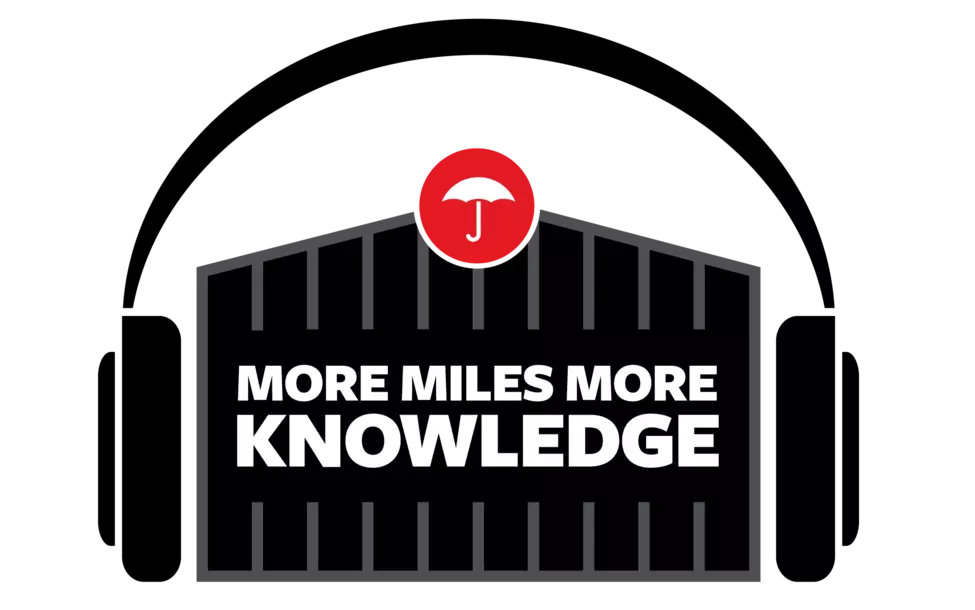
More Miles, More Knowledge
The transportation industry is continually evolving. From cargo theft trends to security best practices, have a listen and gather key takeaways on today’s most challenging issues.
Transportation Business Resources
Cargo Theft: The What, How, Where and When

Transportation Business Resources
4 Best Practices for Navigating FSMA Compliance

Transportation Business Resources
Cargo Theft and Broken Seals Can Be Costly to Transportation Businesses
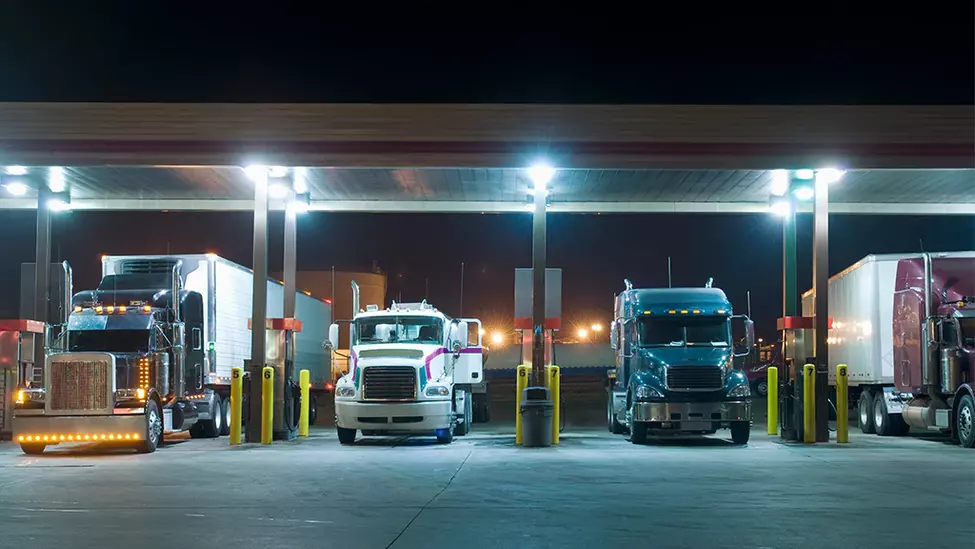
Transportation Business Resources
Transportation IoT: Opportunities and Risks
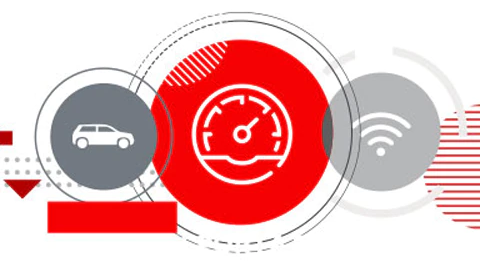
Transportation Business Resources
4 Ways Domestic Freight Brokers Can Avoid Unexpected Liability Claims
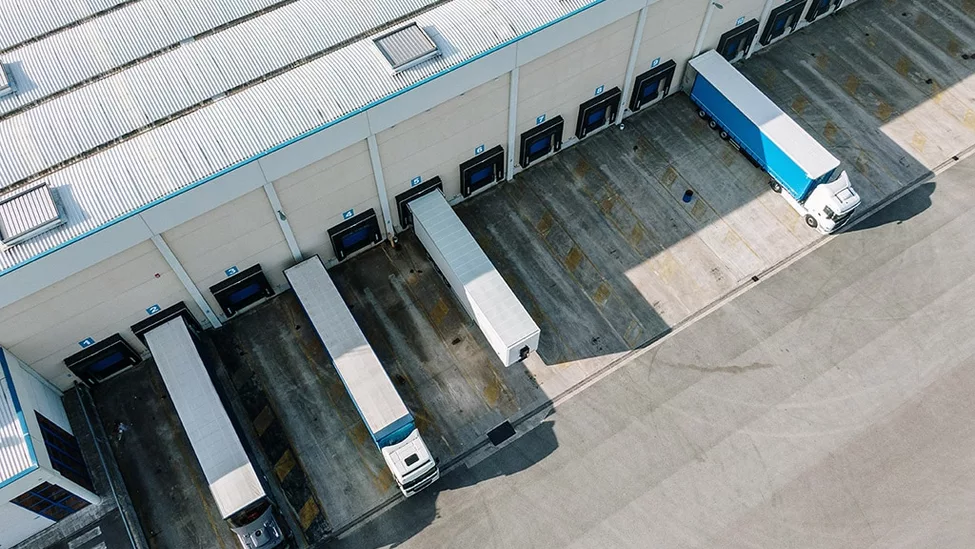
More Transportation Resources
Supply Chain Risk Management Resources
Life of a Piece of Cargo
There’s a lot that can happen to cargo on its journey. Protecting yourself from these cargo-related risks is key to protecting your supply chain.

Supply Chain Risk Management Resources
Supply Chain Management Tips
Your business may be held liable for every step in your supply chain. Get tips on effective supply chain management with this infographic from Travelers.
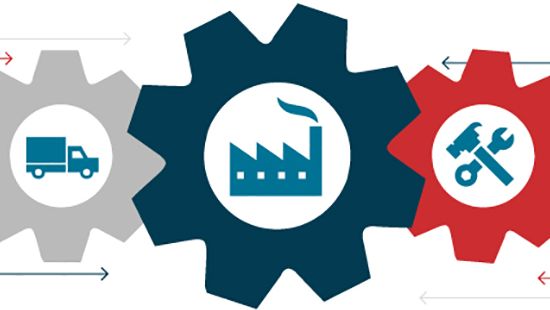
Supply Chain Risk Management Resources
The Evolution of the Freight Broker Model Brings New Risks
A new business model in the freight broker industry brings new risks as well as opportunities.
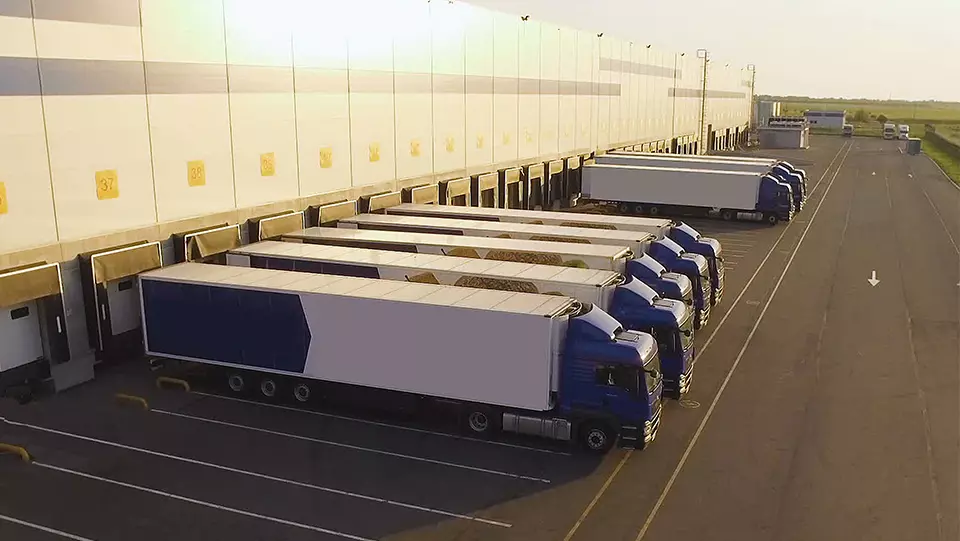
Supply Chain Risk Management Resources
Where Is Your Supply Chain the Most Vulnerable?
Compare your results to those who took the Supply Chain Pressure Test and learn about potential risks from weak links.
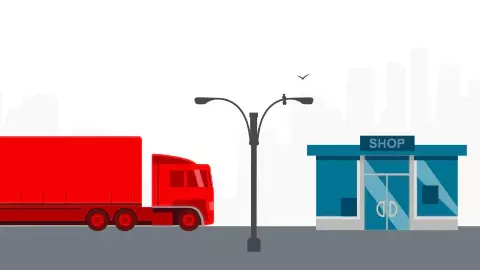
Supply Chain Risk Management Resources
4 Ways Freight Brokers Can Help Prevent Cargo Theft
Here are some ways that freight brokers can help prevent cargo theft, including contractual risk transfer, properly vetting carriers and recognizing potential cargo theft schemes.

Supply Chain Risk Management Resources
5 Cargo Theft Tactics and How to Help Prevent Them
Cargo theft comes in many forms, from fictitious pickups to misdirected loads. Learn cargo theft types and tips for cargo theft prevention.

Driver & Fleet Safety
8 Elements of a Fleet Safety Program
A formal fleet safety program can help maximize fleet efficiency, enhance safety and more.

Supply Chain Risk Management Resources
Protecting Your Cargo in Transit
Taking steps to protect cargo can help prevent business interruptions. Learn about inspecting, securing and receiving cargo.

Related Products & Services
Transportation Insurance
From vehicles to cargo, Travelers can help you find the right transportation coverage for today’s unique risks. A leader in insuring commercial vehicles, we provide a broad range of affordable commercial insurance coverages to help auto and trucking customers protect their business.
Special Investigations Group
Our Special Investigations Group is dedicated to theft protection and recovery, guiding clients through the adoption of procedures that harden their operations against criminal activity and assisting law enforcement on the recovery of stolen goods.
